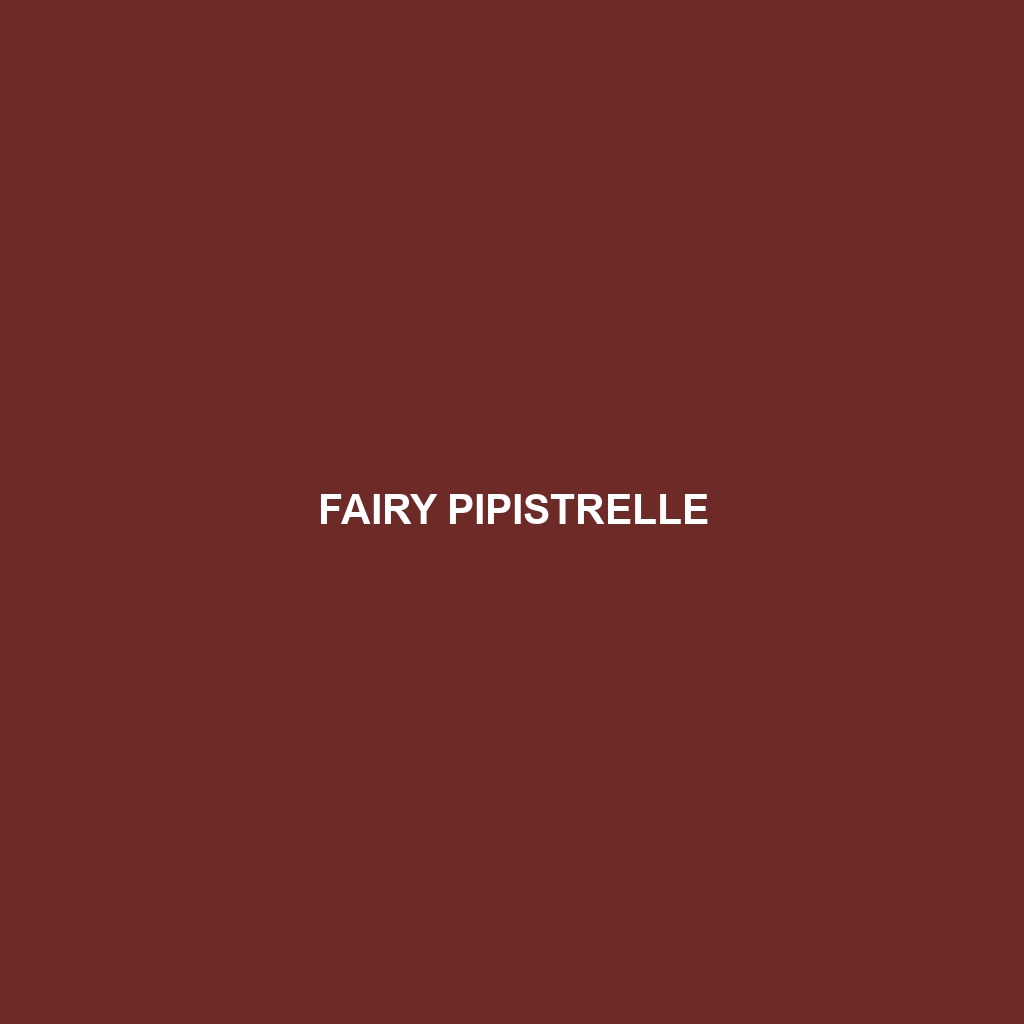Fairy Pipistrelle: An Overview
Common Name: Fairy Pipistrelle
Scientific Name: Pipistrellus pygmaeus
Habitat
The Fairy Pipistrelle is primarily found across Europe, particularly in temperate regions. These bats prefer habitats that include woodlands, wetlands, and suburban areas. They thrive in locations with abundant insect populations and tree cover, which provide both shelter and foraging opportunities. Key geographic areas of occurrence include the United Kingdom, parts of France, and other Western European countries.
Physical Characteristics
Fairy Pipistrelle bats are small, typically measuring 3 to 8 cm in body length, with a wingspan of about 24 to 27 cm. Their fur is soft and dense, ranging in color from light brown to reddish-brown, with a paler underside. They possess a distinct, pointed snout, and notable features include large ears that aid in echolocation, helping them navigate and hunt effectively in low-light environments.
Behavior
These bats are nocturnal, emerging at dusk to forage for insects. Their agile flight patterns allow them to catch flying insects mid-air, showcasing their exceptional hunting skills. Fairy Pipistrelles are known to roost in trees, buildings, and bat boxes. They exhibit social behavior when roosting in colonies, often seen in small to medium groups, particularly during the breeding season.
Diet
The diet of the Fairy Pipistrelle mainly consists of small flying insects. Common food sources include midges, moths, and mosquitoes. Their foraging habits typically involve fluttering through vegetation or over water surfaces, which enhances their ability to capture prey using echolocation, a critical adaptation for surviving in their environment.
Reproduction
The breeding season for the Fairy Pipistrelle occurs in late spring, where males will display to attract females. After a gestation period of about 6 to 7 weeks, typically one to two pups are born. Mothers often form creches, allowing for cooperative care of the young. Pups are weaned by about 4 weeks and start flying shortly thereafter, learning to hunt under their mother’s guidance.
Conservation Status
The current conservation status of the Fairy Pipistrelle is classified as vulnerable by the International Union for Conservation of Nature (IUCN). Habitat loss, pollution, and climate change are significant threats that contribute to their declining populations. Conservation efforts focus on protecting habitats and implementing safe roosting sites.
Interesting Facts
Did you know that the Fairy Pipistrelle is one of the smallest bat species in Europe? Their squeaks can reach frequencies as high as 50 kHz, enabling them to effectively navigate and hunt in complete darkness. They are also known to be able to fly at speeds of up to 24 km/h, making them agile hunters.
Role in Ecosystem
The Fairy Pipistrelle plays a crucial role in its ecosystem as a natural pest controller. By primarily feeding on insects, they help maintain the balance within the ecosystem, preventing overpopulation of certain insect species. Additionally, their presence indicates a healthy environment, as they are sensitive to habitat degradation.
